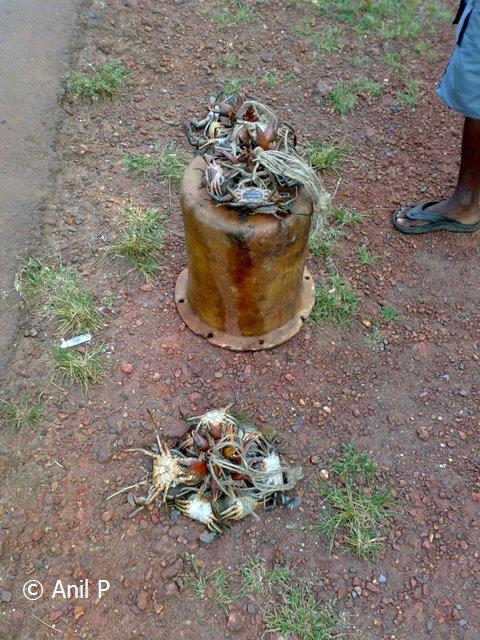Past Bhoma, off the road that
runs on to Panjim, I remember a house set back from the road before it cuts
through paddy fields and climbs over the bridge at Banastari a short distance
away. It sat in a cluster of trees like many Goan houses do as you move away
from urban centers and meander in the hinterland.
From the window of the bus I
would see a mirror hanging by the door that led into the house. A verandah ran
across the front. It seemed to be an old house. The sloping tiled roof extended
over the verandah. A quiet had settled about it. The trees barely moved. They
stood still, at attention.
In time, after I first noticed
the mirror, I would often wonder who looked into it for, it hung prominently on
the wall framing the door. Whoever it was must be particular about how they
were turned out before leaving the house I thought. Maybe it was put to use to
make sure those entering through the door had a chance to ensure they looked
presentable to those they came to meet.
I do not know. I just made up
stories in my mind to keep me company on my rides west toward Panjim.
So each time the bus would near
the stretch of road soon after passing the temple at Bhoma, I would turn to the
window expecting to see the lady of the house step in front of the mirror and
adjust flowers in her hair tied into a bun before stepping out of the house in
a colourful sari. Many Goan women from the hinterland tuck flowers into their
hair knotted into neat buns.
Early in the day their fragrances
suffuse morning rides in those private buses that hustling ‘conductors’ run
between city and town centers, shepherding commuters with a combination of
cajoling, a spot of friendly banter and good natured teasing and outright abuses.
The door by the mirror always stood
open on the occasions I passed it as if those who lived there had figured it
was better to keep the door open than open and shut it each time they went out
or came in. But I never saw anyone look into the mirror. Actually I never saw
anyone in the verandah ever though I was certain people lived in the house. Not
that I took that road often.
In time the window and my own
anticipation of seeing a face reflected in the mirror became a fixture on my
journeys to Panjim and beyond in much the same manner that local Goan youth in
half pants who hawked crabs roadside not far the house with the mirror came to
be ‘permanent’ markers of my rides west through my growing years.
Over the years, each time the bus
takes the curve revealing the stretch that straightens on the arrow, flanked by
tidal waters that back up along narrow water channels the Madkai flats fill up,
I expect to see local men, mostly youth, roadside holding out wriggling crabs
to passing motorists.
They fish in the Khazan fields
near the Banastarim bridge, scouring mangroves for crabs in the waters
regulated by sluice gates. The Kurleo, as crabs are called in Konkani, are a
favoured delicacy among Goans.
They leave crab nets with baits
in the water all along narrow walking bunds before collecting their catch hours
later. They sell their catch by the roadside in the evening as office-goers
return home.
It’s a familiar sight. Even the
faces are familiar though as years pass, some faces, of young men who’ve left the
village for jobs elsewhere, change. But the crabs continue to be sold roadside
in Bhoma to this day.
Of the mirror I am not so sure.
I’d like to believe it’s still there, like the barges that creep up the
Mandovi, a constant on my journeys along that river.
Or for that matter the fading
blue signboard hanging from projecting balconies of a house past Old Goa, its
distinctly projecting letters testifying to its antiquity as prominently as its
spelling – Caxinata for Kashinath, and Camotim for Kamat or Kamath, reminding passers-by
of its Portuguese roots from a good fifty years or more ago.
I tend to unconsciously look for
the rusting board on approaching the turn nearing Ribandar, another of those
signposts promising continuity with the old, with childhood, with youth, with
carefree times.
Caxinata P. Camotim
E
Irmao Limitada
Together, each of them, and there
are many more, ensured continuity over time at least over that stretch of road,
reassuring me that nothing has changed even though much has. Their presence
meant though years had passed, time hadn’t.
They are my ‘permanent’
signposts. I used them, along with many others, to relate to a land and a
people I left long ago to make my living elsewhere.
I seek them afresh each time I
return to Goa to renew my bond with it.











